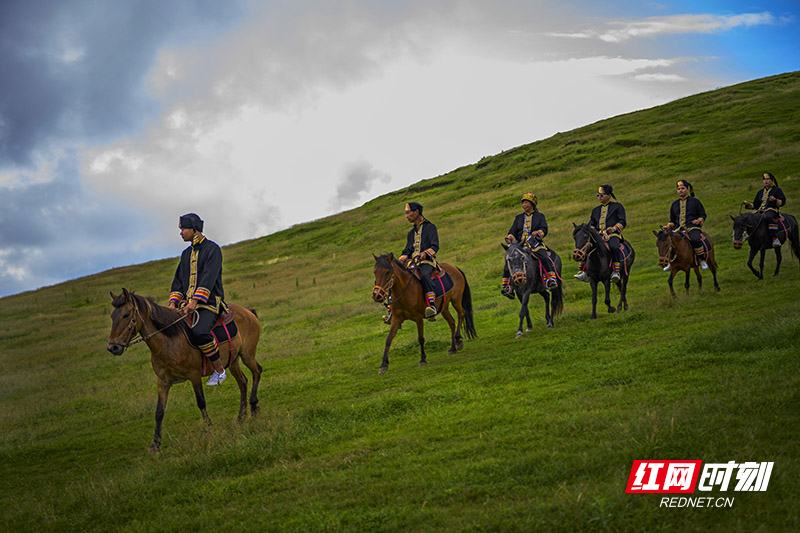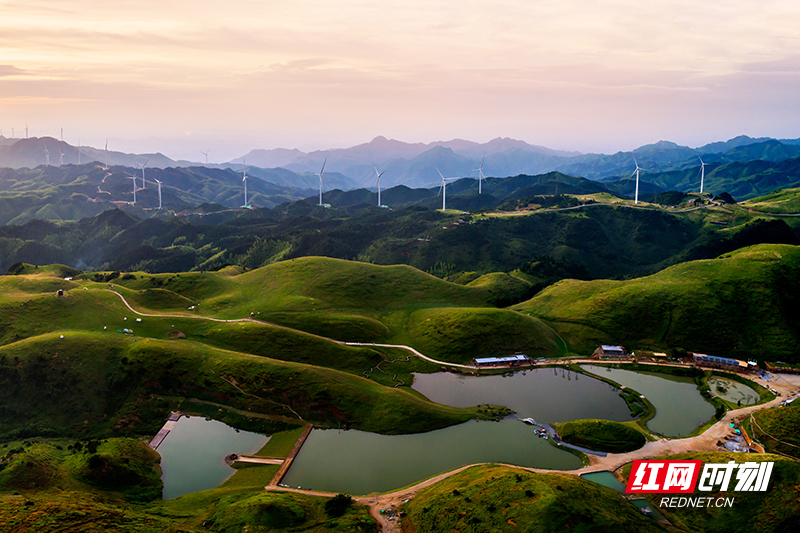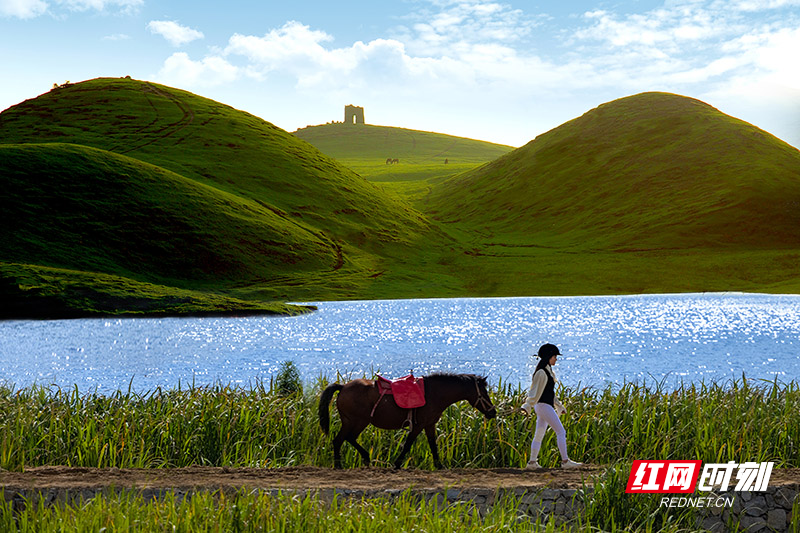Magnificent Yangtian Lake Grassland
2023-08-14
Yangtian Lake Grassland in Beihu District, Chenzhou City is the southernmost alpine grassland in China and also the closest alpine grassland to the Greater Bay Area of Guangdong, Hong Kong, and Macao. It takes only one and a half hours by high-speed rail from Guangzhou to Yangtian Lake Grassland.
The alpine meadow, white windmills, Hobbit castle, and rainbow house will make you feel as if in a world created by Hayao Miyazaki.
It may be hard to imagine that the grassland here was once severely damaged due to unregulated grazing.
The magnificent transformation of Yangtian Lake Grassland began in 2020.

In 2020, Chenzhou Jinzhan Tourism Development Co., Ltd. began its business in hotels, ecological agriculture, study tour, and tourism product development in the Yangtian Lake Grassland Scenic Area.
That year, Beihu District formulated the “Ecological Restoration and Management Plan for Yangtian Lake Grassland”, implemented a series of actions such as ecological protection and restoration, and strengthened grassland law enforcement, further improving the protection mechanism of both closure and ecological restoration.
In April of the same year, Chenzhou Jinzhan and the local government jointly implemented a ban on grazing.
During the grazing ban period, more than 14,000 cows, horses, sheep, and other animals that were previously grazed on the grassland were relocated, and a horse cooperative was established with local villagers to jointly operate and manage more than 300 horses needed for tourism. At the same time, the grassland was fully closed by fencing for regeneration.

300,000 heads of livestock were fenced with wire mesh, infrared surveillance equipment and prickly vines. Reservoirs for irrigation were built, 6,000 meters of pipelines were pre-buried, and a series of targeted and effective measures to prevent and control pests and diseases.
On April 22, 2021, when Tang Fanglin, director of the Grassland Department of the National Forestry and Grassland Administration, led a team to visit Yangtian Lake Grassland for the ecological protection and restoration work, he praised the unique charm of Yangtian Lake Grassland.
According to statistics, from June 2020 to now, the area of restored greenery in Yangtian Lake Grassland has reached 1,132,000 square meters, and the grassland coverage rate has increased from 64% in 2019 to 90%. The Yangtian Lake Grassland that once faced desertification and soil erosion is now full of green vitality.
During this year’s May Day holiday alone, Yangtian Lake Grassland Scenic Area received a total of 103,270 visitors, an increase of 4.3 times compared to the same period last year, and set a new record on May 1 with 36,800 visitors.

The high popularity has promoted the development of cultural tourism. The “beautified’ Yangtian Lake Grassland has driven the cultural tourism development of local villages, with an average annual income increase of more than 50,000 yuan per capita for villagers, and the number of homestay beds has grown from 600 to over 3,200.
This year, Yangtian Lake Grassland Scenic Area was selected as one of the Top 20 Hunan Scenic Spots Most Preferred by Greater Bay Area Tourists and won the title of the first 5C-level national campsite in the province.
Undoubtedly, Yangtian Lake Grassland has become a banner of ecological restoration in Beihu District.
Since the beginning of this year, Beihu District has strictly implemented the River Chief System, Forest Chief System, and Field Chief System, and comprehensively implemented the national pilot project of water system connectivity and beautiful rural areas, and the Xihe River comprehensive management project.
The water quality of Xihe River, Chenjiang River, and Tongxin River has basically reached Class III surface water quality.
At the same time, it has promoted green transformation, with 16 green mines, 2 green factories, and 4 clean factories built. Chenzhou Economic Development Zone has successfully upgraded to a provincial-level green park.
Yangtian Lake Grassland has become a desirable place for people to visit, and an important support for local villagers to achieve rural revitalization.




